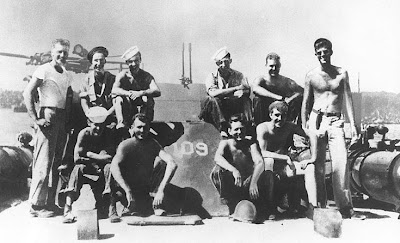 |
| The crew are wearing Type V PFDs, also called "work vests." The coxswain (driver) is wearing a Type III "float coat." |
Some people just don't like life jackets. One morning I was helping passengers board an inflatable launch; in a few minutes they would all be on a sunny, isolated Mexican beach. But one guy just couldn't go along with our safety requirement to wear a PFD (personal flotation device) while in the boat.
"I've crossed the North Atlantic three times on a 40-foot boat without wearing a life jacket," he barked. "I don't see why I should have to wear one now."
We all waited while he grudgingly donned his life jacket, then we headed for the beach. All I had said was "I'm not allowed to get underway until everyone is wearing a life jacket." What I wanted to say was "You'd think you'd have learned by now."
But many people only learn the hard way. Earlier this month, Sheldon Olsen and his two-year-old son Jace disappeared while canoeing on Lake Limerick, Washington. The older Olsen's body was eventually found, but the toddler is still missing. Also found: the canoe, with two life jackets in it.
 |
| Type I PFDs, also called "offshore life jackets. |
Aversion to life jackets is not limited to recreational boaters. Seeing a preview of the TV show Deadliest Catch once, I commented to a fellow crew member, and former commercial fisherman, that maybe the job wouldn't be so "deadly" if the crew working on deck were wearing life jackets. He replied that, in the cold Alaska waters where the Deadliest Catch boats work, you're going to die from hypothermia before you're going to drown. He was wrong, though. A crew member wearing a Type I PFD, the kind that keeps the wearer's head above water even when he or she is unconscious, will hold off hypothermia several times longer than someone without a PFD.
Keith Colburn, captain of one of the Deadliest Catch boats, insists that much of the footage show does not accurately portray conditions on the vessels most of time. As he told Chris Landry of the website Soundings
The most dramatic action, of course, usually makes it on the show. The “Deadliest Catch” often portrays the fishermen as “working in unsafe conditions, working unsafely and on the edge of capsizing at any given moment,” says Colburn. That’s simply not accurate, he maintains.
“The mariners who work in the Bering Sea are prudent and professional and constantly working to minimize risk and maximize safety,” says Colburn, who has participated in the show for four years.
Colburn was selected to be the spokesman for the US Coast Guard's "Boat Responsibly" program in 2009, in part because he requires his crew to wear PFDs when on deck, even in calm water.
Related Posts
Related Articles
US Coast Guard: PFD Selection, Use, Wear & Care
Soundings: "Deadliest" Skipper On A Safety Mission























